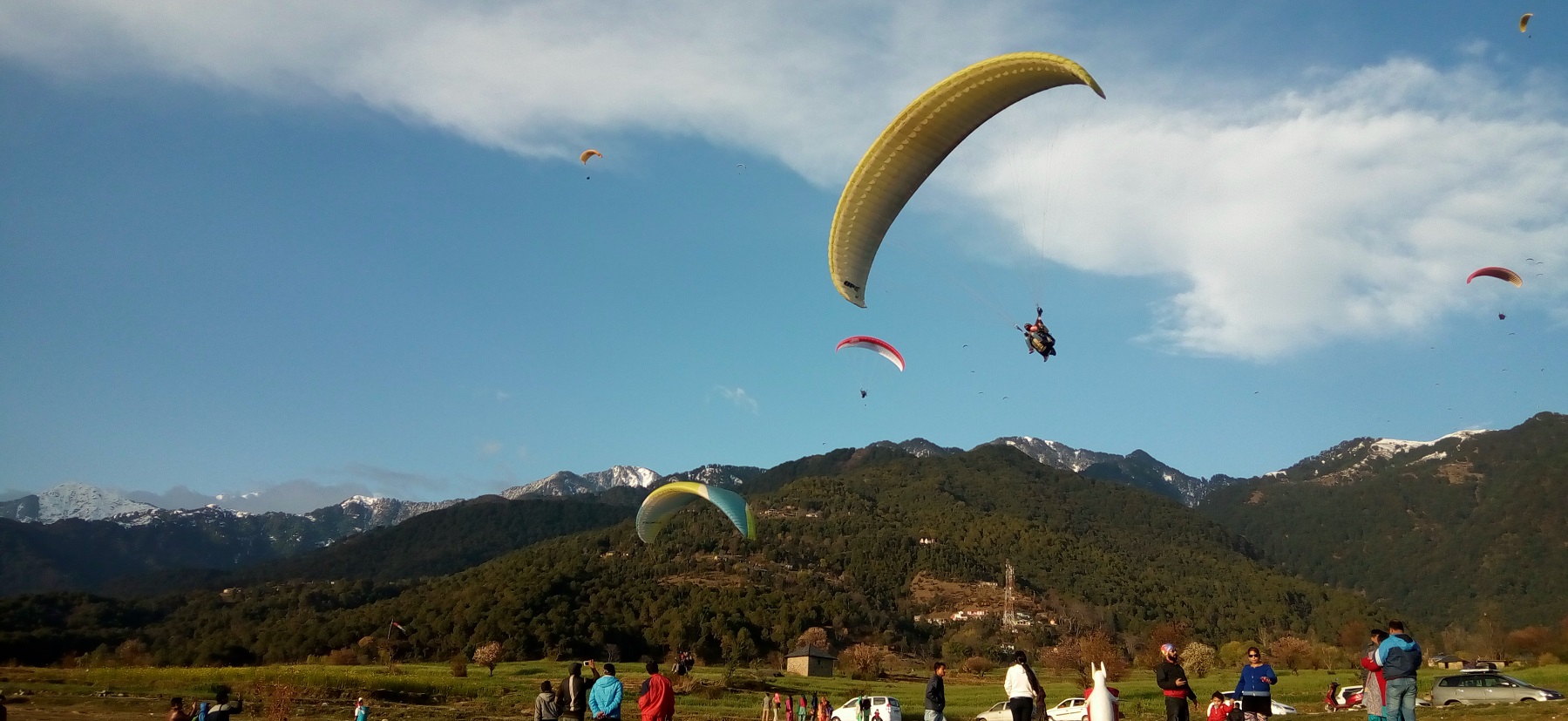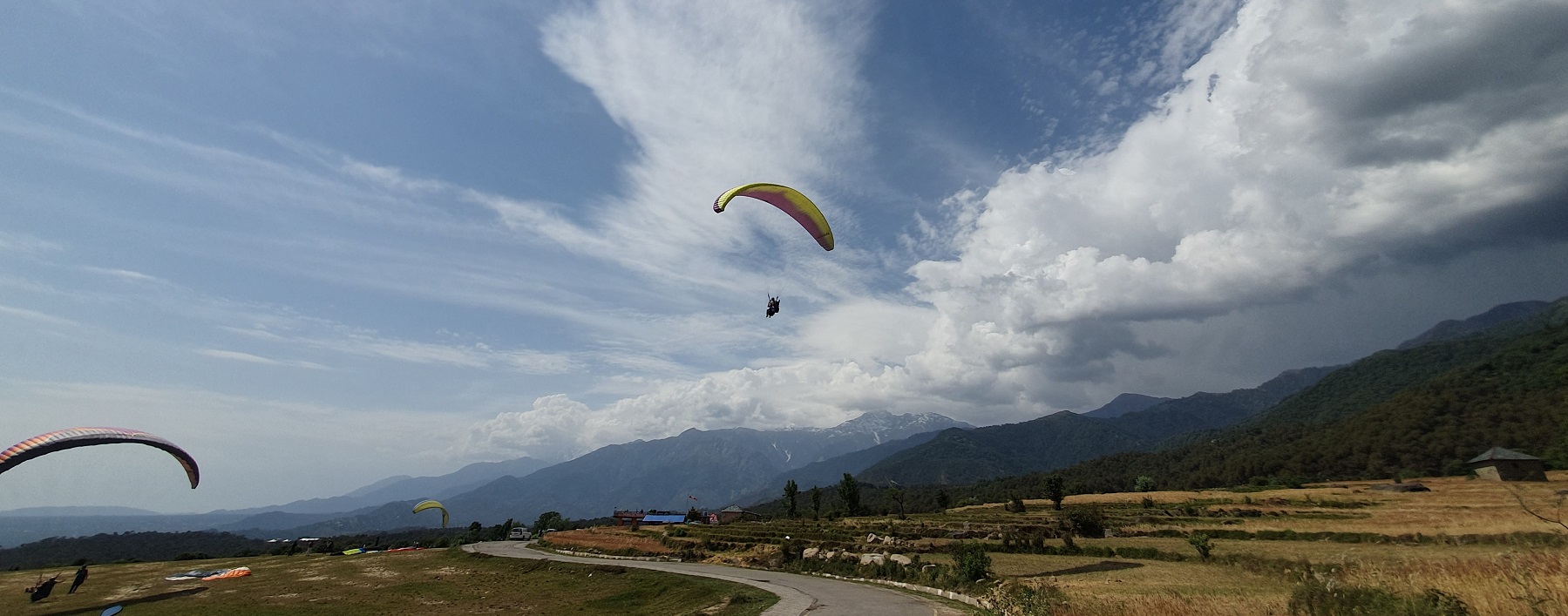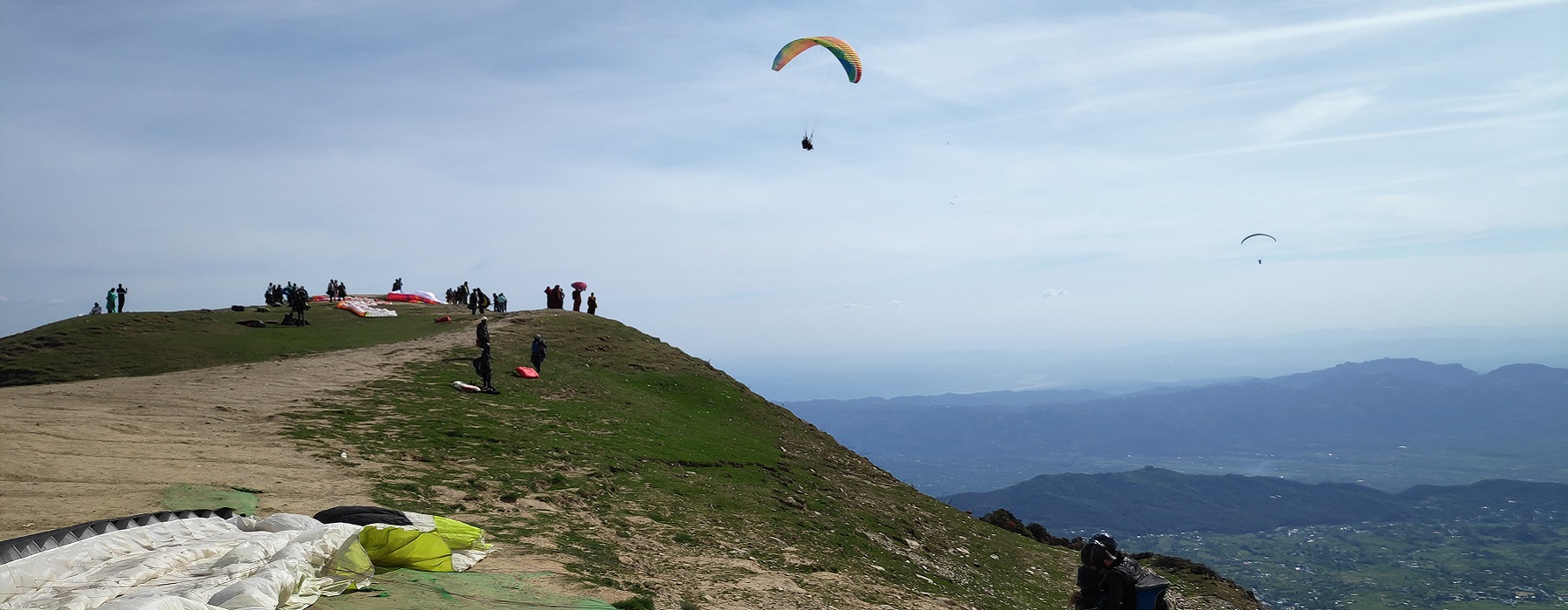Bir is on the edge of a forest that has been given a sanctuary status. Bir has found a place in the international paragliding circuit. The strong thermals and relatively consistent weather conditions have attracted paragliding enthusiasts from all over the country. At an elevation of 7,600 ft (2300 meters), the take off site is a small meadow at Billing 14 km from Bir.
It is named after a Scottish officer, Captain Billing who served the British empire during the pre-independence era.
For the truly brave at heart, let us fast track you on an intensive 2 week paragliding course. And for those who wish to enjoy the Kangra valley like a bird without the hassle of training, we will arrange a tandem flight for you with an experienced pilot.
Bir has a large tibetan colony, which provides an interesting juxtaposition of cultures. The colony was built soon after the Dalai Lama was granted asylum in Dharamshala. The sprawling and ornate monasteries constructed by them add to the landscape in and around Bir. A visit to any of these will be worth your while.
Bir, and the resort is a paradise for bird watchers because of its vegetation and climate, which includes pines and Cedar (Deodar) forests. Many trekking routes to Manali and Chamba originate from Bir.
History of Bir Himachal Pradesh
Bir was ruled by the Pal dynasty of the Chandarvanshi lineage.[citation needed] The last Raja or Rai was Raizada Prithi Pal, who was a descendant of the Rajas of Bhangahal, who appear to have maintained their rights until the time of Raja Prithi Pal in the early part of the eighteenth century. Raja Prithi Pal fell victim to his father-in-law, Raja Sidh Sen, who in 1728 invited him to Mandi on the pretext of seeking his assistance against the Raja of Suket. He was kindly received, but within a month of his arrival, he was beguiled into the Damdama Fort, and there murdered. It is said his body was duly burnt, but his head was buried in a tank facing the Mandi Raja's palace. A pillar was erected on the spot, and light was kept burning on it for years. Sidh Sen's object in murdering Raja Prithi Pal was to seize his territory, but in this, he only partially succeeded. The forts at Jagapur, Tika Thana and the Patgana of Nir, with eighteen villages of Ilaga Chuhar (all of them until then forming part of the Bhangahal kingdom), were annexed to Mandi. Subsequently, Sidh Sen attempted to seize Karanpur, which also belonged to Bhangahal, but he was repulsed by Raja Raghunath Pal who had succeeded his father Raja Prithi Pal. In a second invasion, he penetrated as far as Kotharli Gulu, then in Bhangahal, but Raghunath Pal was able, with the assistance of Raja Thedi Singh of Kulu, not only to check his advance, but also to beat him back with considerable loss.
The Mughal Emperors always appreciated the loyalty of the Bhanghal chiefs, and when the news of repeated aggression of the Mandhi Raja on Bhangahal reached the Emperor in Delhi, he deputed Adina Beg, Governor of Jullundur, to drive him off. But the Khan died on the road at Dinanagar in 1732. The affair ended unfortunately for Raghunath Pal, who went to meet the Governor, as Sham Sher Singh, then Raja of Mandi, took advantage of his absence to seize the much-coveted Ilaqa of Karanpur.
Raghunath Pal died in 1749 and was succeeded by his son, Dalip Pal, whose reign was rendered memorable by a combined, though unsuccessful, attack made on Bhangahal by the Rajas of Mandi, Kullu, Kahlur, Nalagarh, Guler and Jaswan. The united forces of these chiefs encamped at Tika Changar and made an attempt to capture the Raja and his brother, Mian Bhim Pal, but were eventually driven back with great loss. the Raja commemorated the victory by erecting several mounds composed of the heads of his slaughtered foes. One of these mounds exists in the pine forest in Bir, and another stands on the banks of the Pun river within the limits of Bhangahal.
Bir was annexed in 1779 by the Raja of Kulu shortly before the death of Dalip Pal, whose son, Man Pal, succeeded only to the Taaluqas of Lanod and Paprola. He died on his way to Delhi, whether he was proceeding with the object of enlisting the sympathies of the Mughal Emperor in an attempt to make the recovery of his patrimony. The Rajas of Kangra and Guler took advantage of Man Pal's absence to seize villages and lands, Kangra appropriating Lanod and Paprola and Guler the remaining property. Man Pal's widow and her infant son, Uchal Pal sought refuge at Rehlu with Raja Rai Singh of Chamba, who gave her a home and allowed her a small jagir.
In 1785, when Raja Sansar Chand of Kangra married a daughter of Man Pal, he lent Uchal Pal a small force to help him in recovering his lands from Mandi Raja. This latter chief had recourse to stratagem. He bought off Sansar Chand's principal officer and persuaded Raja Rai Singh of Chamba to carry war into Katoch dominions. When Sansar Chand found that Rai Singh had advanced within a short distance of Kangra, he had to muster all his available forces, including the portion he had lent to Uchal Pal. After the battle of Nerti, in which Raja Rai Singh was defeated and killed, the Mandi and Kullu rajas secured the possession of Bangahal by paying Sansar Chand five lakh rupees (INR 500,000).
Some time after this, Uchal Pal died leaving three sons and a daughter who lived under Raja Sansar Chand Katoch's protection. The girl subsequently married the Raja of Siba. Ram Pal, the eldest son of Uchal Pal, died childless in 1843. The efforts of Bahadur Pal, his younger brother, to recover the family estate, were always opposed by the Raja of Mandi. Mathru, the father or Barar Pal, the head of the family in 1909, succeeded in obtaining from the British Government a pension of Rs. 500 per annum for his cousin, Mian Bahadur Pal, and this he enjoyed until his death in 1854. Barar Pal was given the title of Rai Sahib in 1895. He was a Divisional Darbari, Lambardar and Kotwal of his circle and a member of the Local and District Boards. His family held 80 acres as proprietors in Bir Bhangahal and Bir, yielding Rs. 2,200 per annum. He died in 1912. The last head, Mian Prithi Pal, was a Zaildar and lived in Bir. He was very well spoken of by his people.






